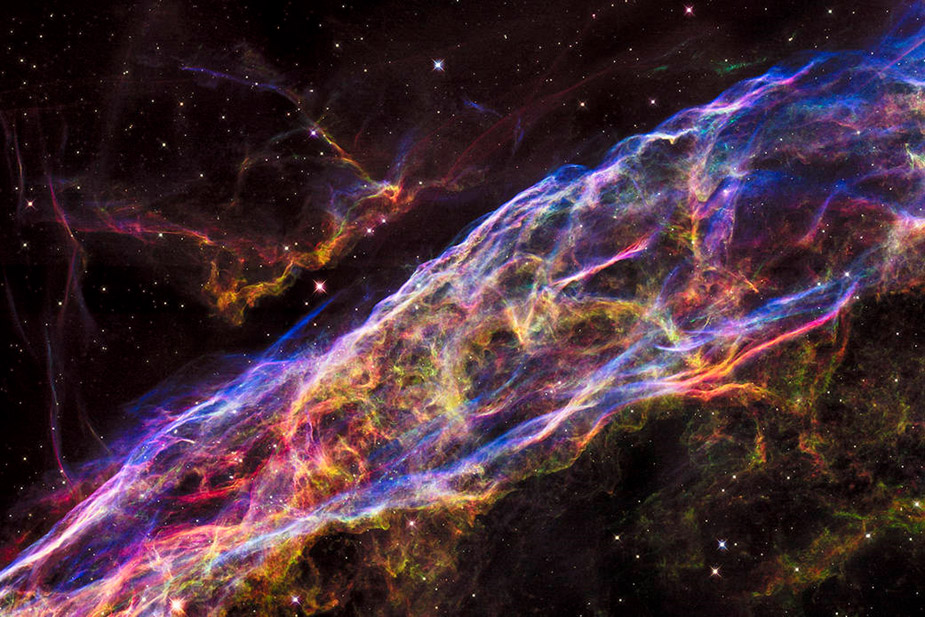
Veil Nebula, Seen From the Hubble
| published December 1, 2015 |
By R. Alan Clanton, Thursday Review editor
An elegant, seemingly gossamer-thin shroud of dust and gas illustrates the remnants of a past supernova—a star which exploded some 8,000 years ago in the constellation Cygnus, also known as The Swan. The dazzling gases and glittering dust are still expanding, and this image captures only a small piece of the larger remnant of the explosion. Astronomers have dubbed this formation the Veil Nebula, part of a larger structure roughly 110 light years across.
The star at the center of the explosion—8,000 years ago—was 20 times more massive than the sun. The bright colors are formed as the superhot fast-moving gases and energized dust expand at great speed into a larger, wider field of much cooler gas and dust, triggering the emission of intense, spectral light.
The image shown here is actually a mosaic of six photos captured by the Hubble, carefully pieced together by astronomers to create this panoramic view of one small area of the much more massive formation.
The Veil Nebula is not an object only recently discovered. The famed astronomer and cataloger of stars William Herschel first observed and recorded the supernova’s spiral, thinly-laced formation in September of 1784, correctly identifying the colorful object as being a part of Cygnus.
The Veil Nebula is also one of the most easily viewed objects in the night sky. Under ideal viewing conditions (meaning a very dark, reflected-light-free sky), the formation is roughly three times the size of a full moon, and some parts can be observed with the naked eye as a mist-like formation near the bright star 52 Cygnus. Much more of the formation can be easily viewed with a telescope. The entire formation is roughly half spherical, with a corded, filament-like structure similar to a dreamcatcher.
Related Thursday Review articles:
Pluto as Pop Art; Thursday Review staff; Thursday Review; November 12, 2015.
Spirals of the Sunflower Galaxy; Keith H. Roberts; Thursday Review; October 26, 2015.
